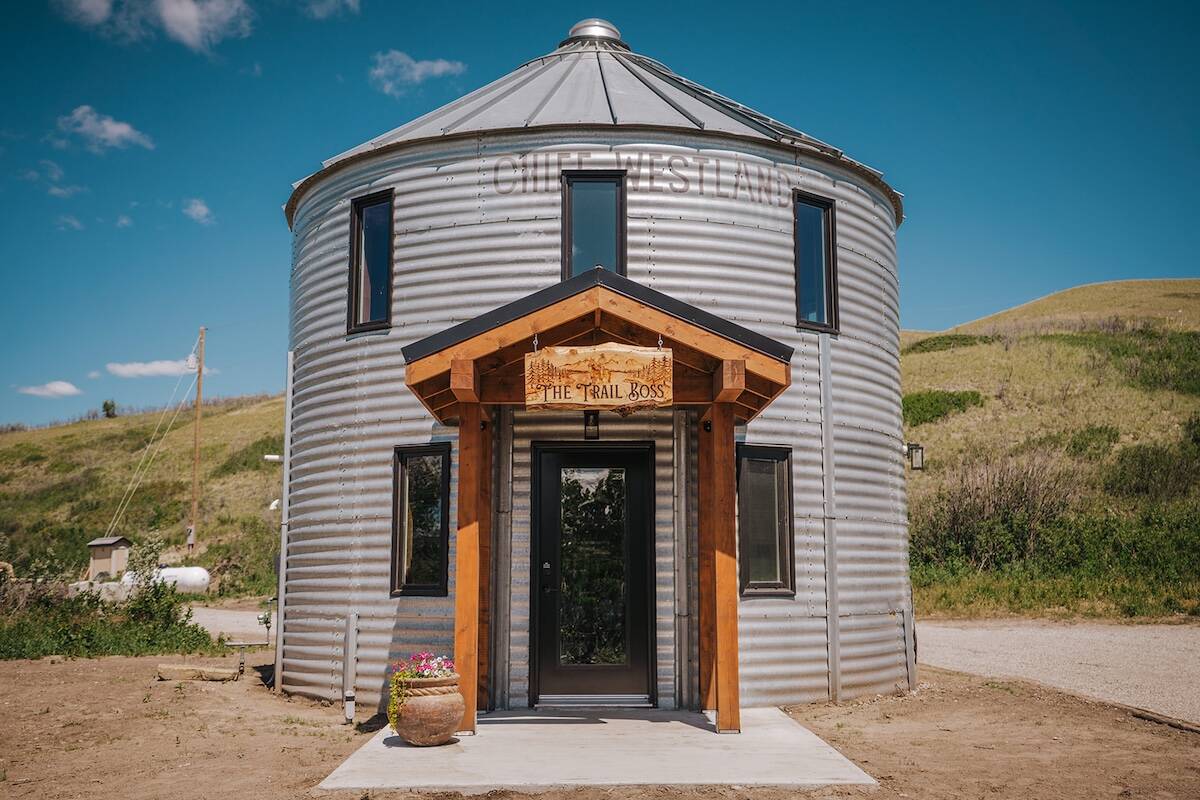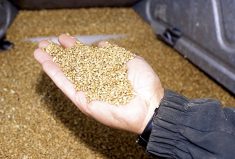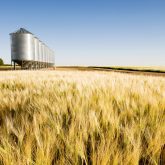Twenty-nine million tonnes is a lot of grains and oilseeds, but that’s how much Prairie producers were holding on their farms as of March 31, according to Statistics Canada.
What’s even more remarkable is that it doesn’t even come as much of a surprise — that number is only a little higher than the five-year average of 28.4 million tonnes.
But where is all this farm storage?
Anecdotally, there seems to be more and larger grain bins dotting the Prairie landscape, but there is little information out there on whether or not farmers are buying more storage capacity.
Read Also

A great idea for repurposing grain bins
The Morrison family of southern Alberta have transformed old grain bins into unique guest cabins.
- Read more: Is 3D grain bin monitoring tech for you?
Lyle Muyres, vice-president of marketing for CORR Grain Systems and a self-described “old farmer,” said that in his experience producers are not only buying more bins but bigger ones. He cites a number of factors: Several years of bumper crops driven by an unprecedented run of good weather; farmers strategically storing grain while waiting for prices to improve; better genetics; and overall better farm management.
And barring an unlikely run of production calamities, there doesn’t appear to be anything that would stop the trend to more storage, said Jonathon Driedger, senior market analyst with Winnipeg-based FarmLink Marketing Solutions.

“If you look over the window of the last number of years and decades, farmers continue to invest in their operations, companies continue to invest in seed and technology, and universities and agronomists continue to invest in practices,” he said. “I think these trends have been driving this improvement in yields.”
There is one wild card — tariffs. Ottawa recently imposed retaliatory counter-tariffs on U.S. steel, and those could bite, said Muyres.
“I have been warned by all of our suppliers to get ready for a huge (price) increase for the 2019 season,” he said. “So I tell producers if you plan to buy in the next year, now might be the right time.”
Thinking big — and strategically
CORR Grain Systems has seen at least a 10 per cent bump in the size of grain storage sold in recent years, said Muyres. The average size is around 40,000 bushels, but that number is a little misleading.
“I compare it to Prairie weather,” he said. “If the average temperature in Saskatchewan is -25 C, the actual temperatures are either -15 or -35. So the average bin we sell might be 40,000 bushels but in actuality we sell a lot of 30,000s and 70,000s. The average number doesn’t reflect the actual size.”
Bin prices range from around $1.50 per bushel for a very basic, large, ground-mounted flat-bottom bin to $3.50 per bushel for a 5,000-bushel, accessory-loaded hopper bottom. The former is far more popular; something Muyres believes is driven by the increasing number of larger farms.

“The majority of customers are interested in the large flats; that’s what we’re really good at and that’s what we sell by far the most of,” said Muyres.
“I think that market is expanding while the hopper bottom market is contracting just by the nature of farm size. Some large farms have 10 semi-loads of grain coming in every hour. There’s a certain need there that the large flats fill that a 5,000-bushel hopper does not.”
Another driver is ‘strategic storage,’ said Driedger.

“The ability to store grain can definitely be an advantage on the marketing side,” he said. “Every year is a little different, but generally speaking there’s a tendency for prices to come under pressure at harvest.
“The ability to store that crop for a few more months and sell in winter or spring is going to work out for you more often than not just by virtue of seasonal price differences.”
Grain gridlock during the winter of 2015 because of poor rail service had a big effect, said Driedger.
“Farmers who didn’t have the ability to store grain, store it well, and ride through that really took some punitive discounts on grain they had to move,” he said. “That’s a bit of an extreme example but I think that too is just one more example in which someone looked back and said, ‘Geez, we’ll invest in the best storage that will help us ride out some of those periods.’”
Weather woes not as woeful
Although the Prairies as a whole have been blessed with a number of years of co-operative weather, individual regions have not been so lucky — one recent example being the wet fall and spring in Alberta in 2016-17 that saw nearly one million acres left unharvested.
But the overall record is remarkable, said Driedger.
“There haven’t been too many years over the last eight or 10 where we’ve had a wreck across the Prairies because it just didn’t rain,” he said. “Last year it was pretty dry for a long period of time, but there was good subsoil moisture and just enough rain to kind of pull us through. So we have gone through a time where we’ve been pretty blessed by weather.”
But it’s not all good weather — better management practices and improved genetics have also played a big role, said Ryan Furtas, a market analyst with Alberta Agriculture and Forestry.
He points to something he’s seeing less of on farms: Grain on the ground.
“If the grain wasn’t worth it you’d probably see guys making storage less of a priority,” said Furtas. “But now that it’s $10 to $11 per bushel for canola, it’s always a priority. The grain is more valuable so there’s more incentive to get it under cover, maintained, and in good condition.”
All of this is why Muyres expects to see the storage trend continue.
“You might have a little bump where it slows or stops, but farms are getting more efficient, getting better at producing more on each acre of land they have,” he said.
















